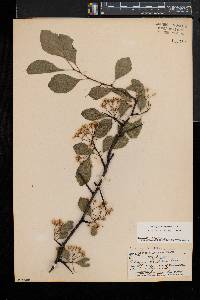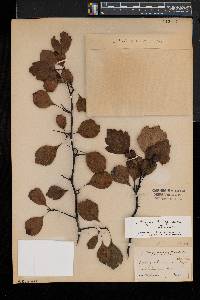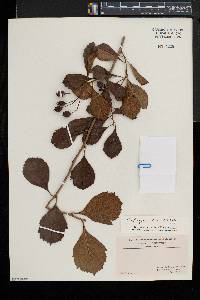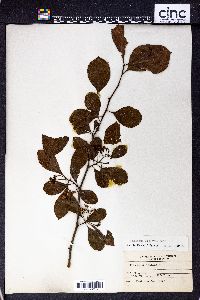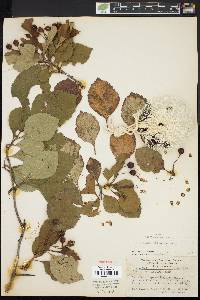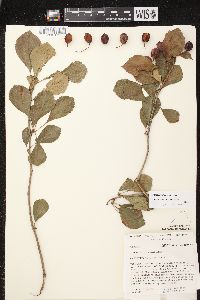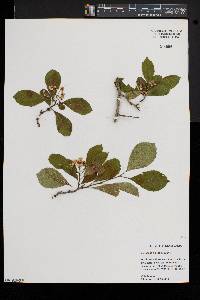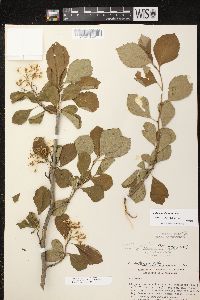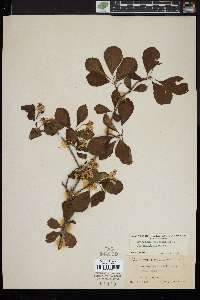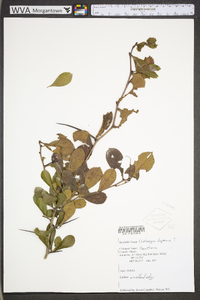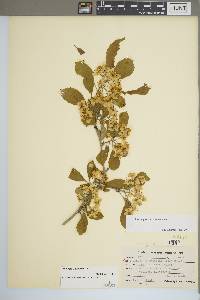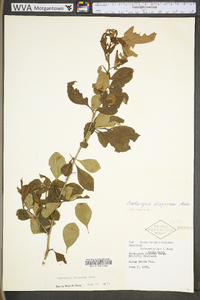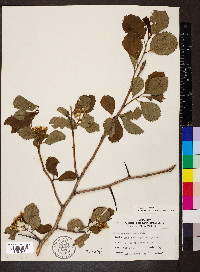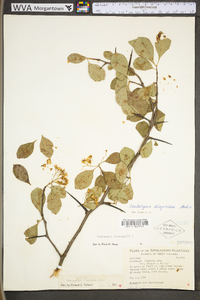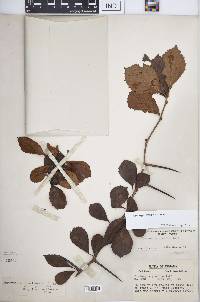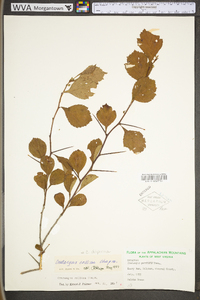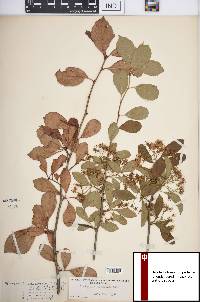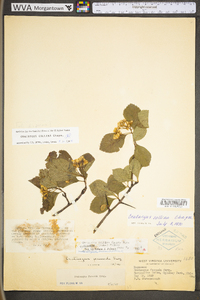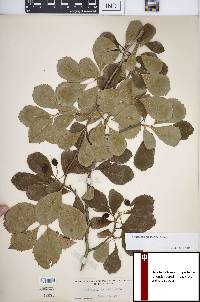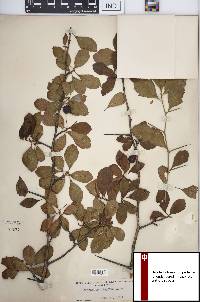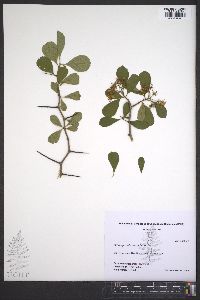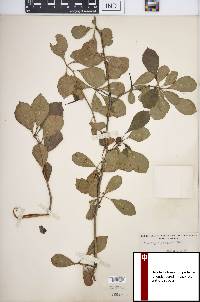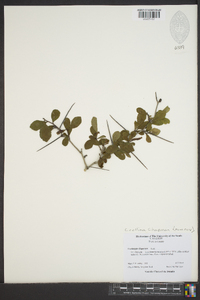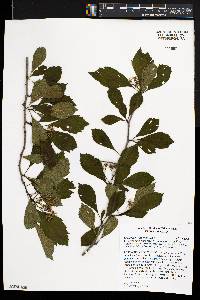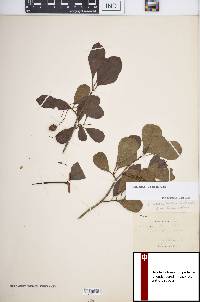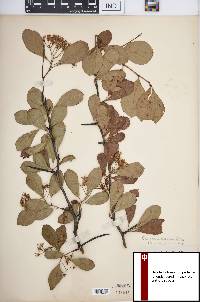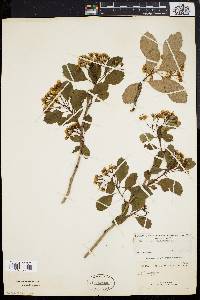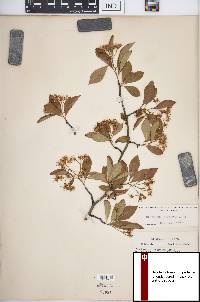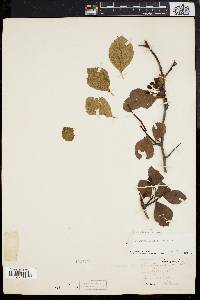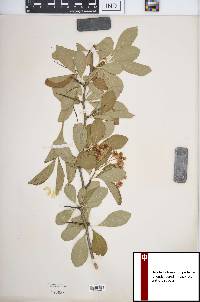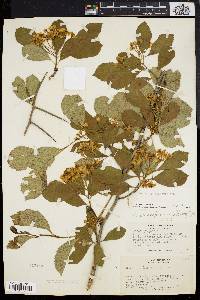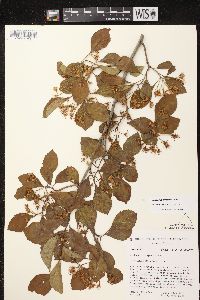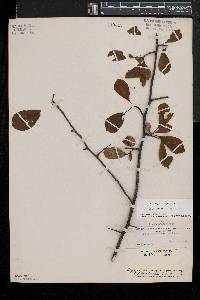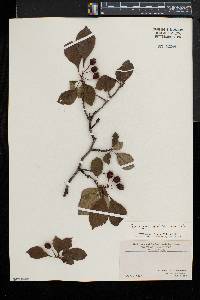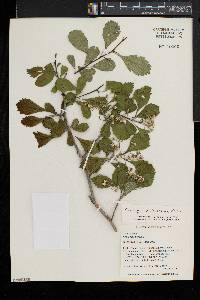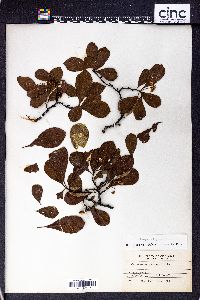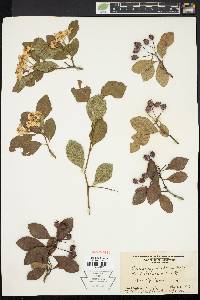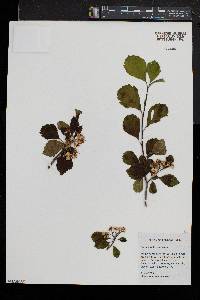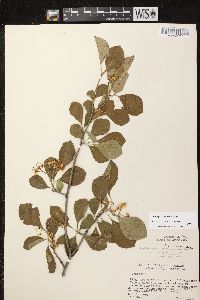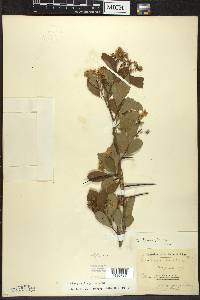Crataegus × disperma
|
|
|
|
Family: Rosaceae
Hybrid Hawthorn
[Crataegus disperma Ashe, moreCrataegus disperma var. peoriensis (Sarg.) Kruschke, Crataegus x disperma Ashe] |
From Flora of Indiana (1940) by Charles C. Deam Leaves obovate or lance-obovate, mostly 2.5-6 cm long, 1.5-4 cm wide, usually pointed or acuminate at the apex, attenuate at the base into slender, winged petioles, sharply serrate on the upper part of the blades or sometimes nearly to the base, otherwise entire or with small, cuneate or spinulose lobes on shoots, rather thin but firm, glabrous or nearly so, bright green and slightly glossy above, veins moderately impressed; flowers 15-18 mm in diameter, in few-flowered or sometimes many-flowered, glabrous corymbs; stamens about 10 or sometimes 12-15; anthers pink; fruit obovoid or ellipsoid, 9-12 mm in diameter, 12-14 mm long, dark red, flesh thin, becoming mellow but dry; nutlets usually 2. A small tree 6-8 m high, with gray, furrowed bark on the trunk and with numerous, ascending or finally spreading, horizontal branches and slender branchlets usually armed with numerous, slender thorns. The leaves, flowers, and fruit of this species resemble somewhat more closely those of Crataegus crus-galli than do those of Crataegus grandis. General but scattered in Indiana in open woodland, mostly along streams. [E.J. Palmer in Deam describes C. grandis as follows:] leaves obovate, mostly 2.5-7 cm long, 2-4 cm wide, rounded or short-pointed at the apex, cuneate and attenuate at the base into slender, winged petioles, coarsely serrate on the upper half to two thirds of the blades, otherwise entire, or sometimes obscurely lobed on shoots, glabrous or with a few scattered hairs above when young, at maturity dark green and shining above, with deeply impressed veins; flowers 14-16 mm in diameter; anthers pink or white; calyx lobes narrowly linear, entire or slightly serrate toward the base, slightly pubescent; fruit subglobose, 10-14 mm in diameter, bright crimson, flesh becoming mellow; nutlets 2-3. A small tree 4-6 m high, or sometimes a stout shrub, with ascending, or in old specimens, horizontal, spreading branches and slender, glabrous branchlets usually armed with numerous, slender thorns. Found in southern Indiana in thickets or borders of woods. This species and the next one [Craetagus disperma] may have arisen as hybrids between some form of Crataegus crus-galli and Crataegus punctata or some related species, as suggested by Eggleston, who has grouped a number of such forms under the name Crataegus cuneiformis (Marsh.) Eggl. The description of Mespilus cuneiformis given by Marshall seems scarcely definite enough for positive identification, although it may well have applied to one of these hybrids, but since there is such a wide difference in the foliage and fruit characters between this and the next species [C. disperma] as well as between others related to them, it seems best to distinguish them and to retain the names already published. The distribution and association of this species, as well as the shape and texture of the leaves, suggest that Crataegus regalis may be one of the parents. |

